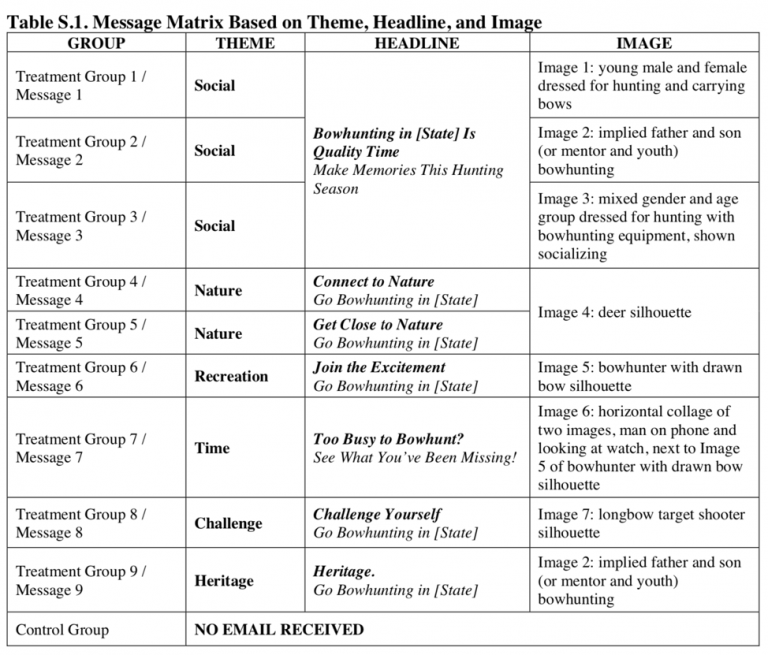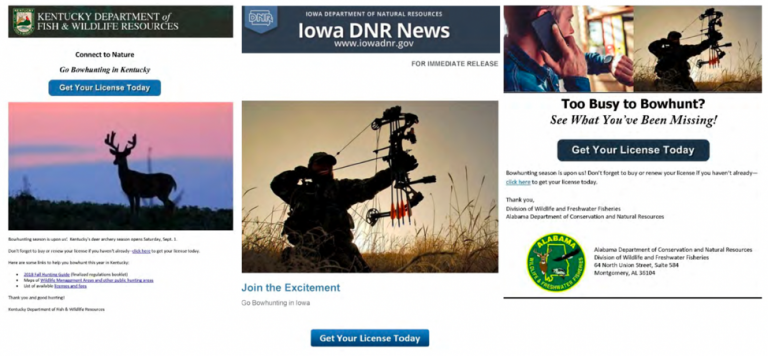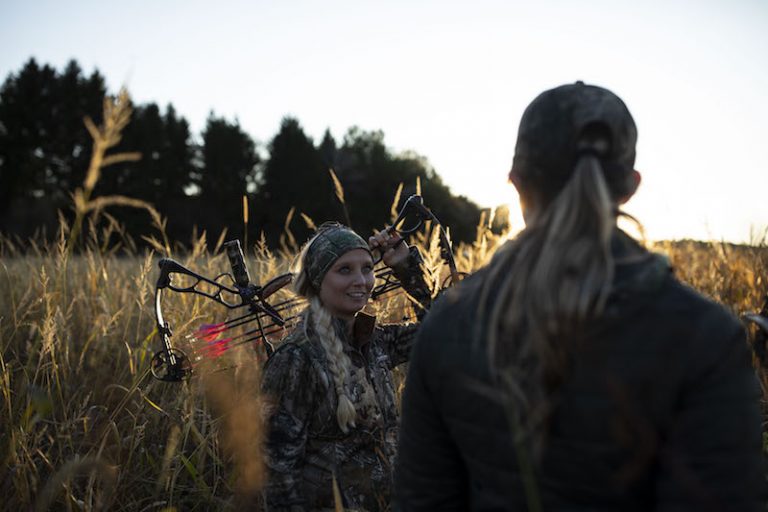Industry
Re-Energize Bowhunters with Proven Email Marketing Messages
ATA research identifies time, nature and recreation as themes that encourage inactive bowhunters to buy a hunting license.
Photo Credit: ATA
Have you wondered how to spur lapsed bowhunters to resume bowhunting?
People can be inspired to buy licenses and go bowhunting by emailing them engaging images, themes and messages, according to a 2019 study commissioned by the Archery Trade Association. The study, conducted by Responsive Management, found that emails mentioning time, nature and recreation were more likely to buy a bowhunting license than those who received messages referring to bowhunting’s heritage, challenges or social elements.
Mark Duda, Responsive Management’s executive director, said the findings give businesses and state wildlife agencies a competitive edge to recruit and reactivate bowhunters using “tried and true” images, themes and messages in their emails.
Why is recruiting and reactivating bowhunters important? Because more bowhunters means more business for ATA members and more license sales to generate money for conservation projects nationwide.
The study was funded by a grant through the Multistate Conservation Grant Program, which is funded by the Wildlife and Sport Fish Restoration Program. The Association of Fish and Wildlife Agencies and the U.S. Fish and Wildlife Service manage the program.
The 2019 project builds on a previous study, deemed Phase 1, which sent 18 different email messages to over 25,000 recipients in five wildlife-agency databases. Phase 2 refined the email themes, images and headline wording based on Phase 1’s findings. It also expanded the initial project’s scope by working with 12 state wildlife agencies. Email messages were sent to over 1 million recipients for Phase 2.
Each state provided the research team with its license data for all bowhunting licenses, or any license that allowed bowhunting for states without a dedicated bowhunting or archery license. The study targeted previously licensed bowhunters who had bought or obtained a bowhunting or general hunting license at any point during the five years prior to the 2018-19 hunting season.
Researchers divided the recipients into 10 groups; nine of which received emails. The other group was the “control,” and received no emails. Nine unique email messages created for each state featured varying combinations of six themes, seven headlines, and seven images. The result was 110 unique messages.
Researchers sent half the emails before hunting season, typically for a specific species season, and the second half midseason. The image below shows the emails’ themes, images and headlines.

Pictured are the themes, images, and headlines used in the study's emails. Photo Credit: ATA
Overall, 55,000 bowhunters participated in the study, which divided them into 117 “treatment” groups and 12 “control” groups.
After the marketing campaign and hunting season ended, researchers analyzed license sales to search for significant increases. They also emailed a follow-up survey, and five states conducted focus groups.
All 12 states saw increased license sales linked to the campaign period for at least one of the nine messages. In fact, six states saw statistically significant lifts in license sales for one or more specific messages correlated with the campaign.
Across the states, three messages generated the best results:
- Connect to Nature – Go Bowhunting in [State] (nature theme)
- Join the Excitement – Go Bowhunting in [State] (recreation theme)
- Too Busy to Bowhunt? See What You’ve Been Missing! (time theme)
Examples of each email are below.

Examples of each email is pictured above. Photo Credit: ATA
Duda said most marketing campaigns generate a 2% return on investment. He was surprised that some emails in this study produced a 10% higher ROI when compared to the control group.
The Phase 2 survey also found that bowhunters preferred social, nature and recreation themes in the messages:
- Bowhunting in [State] is Quality Time – Make Memories This Hunting Season (social theme)
- Join the Excitement – Go Bowhunting in [State] (recreation theme)
- Connect to Nature – Go Bowhunting in [State] (nature theme)
The study also found 20% to 30% of recipients recalled seeing an email before being shown images of the email as a prompt. Further, 30% to 40% of all recipients said they glanced at the message, and 12% to 16% said they read it.
Focus-group participants gave lots of helpful feedback, especially on the email images. Many said image details matter. They quickly pointed out manicured fingernails, wrong types of camouflage, a bow that looked too large for its owner, or a habitat or landscape not typical of their state. The participants also recommended not using stock photos because they lack authenticity.
Andrea Criscione, project manager for Responsive Management, said emails with nature and recreational themes generated the best license sales and bowhunter satisfaction.
“The study proves words matter, images matter, the timing of advertisements matters, and that we can get people back with the right message,” Duda said. “Now, [industry members] need to read the report, use these results, and create their own marketing campaigns to recruit and reactivate customers in their area.”
Duda hopes businesses, organizations and state agencies use the images and messages, even if they must tweak them.
“There are tens of thousands of dollars and three years’ worth of time in this study,” he said. “It’s a treasure trove of free information. If people use it, they’re starting from third base to get home, as opposed to starting from the batter’s box. It gives them a competitive edge because they know what works and what doesn’t.”
The study strengthens efforts to recruit, retain and reactivate bowhunters as part of the R3 movement. Duda said the industry works to recruit and retain bowhunters, but reactivation efforts have taken a back seat, even though reactivating lapsed bowhunters might be cheaper and more effective than recruiting newcomers.
“There are people out there who bowhunted at one time and no longer do,” he said. “We want those people back. The ATA needs to be commended for setting out and scientifically trying to figure out what appeals to those people.”

Use an image like the one above that highlights women and groups. Photo Credit: ATA
The Responsive Management team recommends ATA members and state wildlife agencies use these tips when crafting email marketing campaigns:
- Use messages that communicate bowhunting’s excitement or emphasize connections with nature.
- Customize your message for your area, region or state.
- Consider using local, recognizable images, but avoid stock photos.
- Use images with women, groups and families. Bowhunters like them.
- Limit your message’s length, but include links to useful information.
- Analyze your results, then adjust to improve your campaign’s effectiveness.
Click here to see the study “Reactivating Bowhunters: Evaluating the Effectiveness of Various Email Campaign Messages.”
Questions? Please contact Dan Forster, ATA’s vice president and chief conservation officer, at (866) 266-2776, ext. 128; or danforster@archerytrade.org.
To learn more about the ATA’s R3 efforts and opportunities, contact Josh Gold, ATA’s senior manager of R3 and state relations, at (866) 266-2776, ext. 107; or joshgold@archerytrade.org.

WE ARE HERE TO HELP THE INDUSTRY, TO HELP INDIVIDUAL BUSINESSES GET THE MOST OUT OF THE INDUSTRY, AND TO HELP YOU.